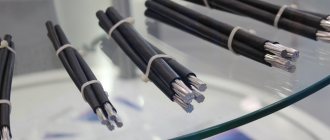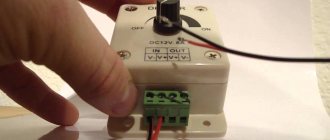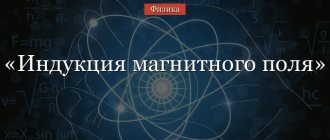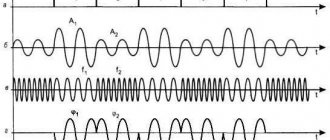Updated July 20, 2022 165 Author: Dmitry Petrov
Hello, dear readers of the KtoNaNovenkogo.ru blog. Understanding the world requires from a person not only an appropriate level of intelligence, but also certain mental efforts.
And the key tools in this matter are induction and deduction - two effective methods, thanks to which any objects or phenomena form the basis of future theories.
And even if we exclude the problems of scientific research, we are left with an ordinary life, during which all we do is make some decisions. Each of them is a whole chain of thoughts and conclusions based on the use of a wide variety of reasoning models.
Let's look at how these models work below.
Induction is...
To make it easier to understand this concept, let’s turn to the linguistic background from dictionaries, since the essence of any term lies in its decoding. The etymology of the word “induction” refers us to the late Latin language, when two conceptual markers were fixed in it:
- based on the noun – inductio (summing, guiding);
- and based on the verb - inducere (establish, entail).
The essence of these markers implies the process of building a logical chain between an action and its consequence.
In other words, by induction we mean a special type of cognitive procedures through which a statement is derived that generalizes some particular facts.
But does this term have the same semantic connotation in other disciplines?
Despite the fact that induction can be considered a universal phenomenon, most often the speaker operates with a more common definition that is directly related to logic.
That is, we usually mean such reasoning in which, based on observations of particular cases, a certain general pattern or theory is gradually deduced.
However, in the semantic spectrum of this concept there are also other interpretations, the meaning of which is determined by the scope of their use. For example, induction:
- in physics , this is the process of the emergence of an electromotive force when the magnetic field surrounding a conductor changes;
- in physiology - this is the mutual stimulation of the processes of inhibition and excitation of the nervous system;
- in medicine , this is a change in the activity and number of enzymes when interacting with chemical compounds;
- in chemistry , it is the acceleration or initiation of a second chemical reaction while the first is occurring.
Since mathematics, economics and law are based on logic, the concept of induction in them refers to the anticipation of results, the establishment of patterns and the derivation of evidence. How close is this version to the truth?
Ampere's experiments
Ampere repeated the same experiments. True, the galvanometers that both scientists used were not the same as ours. These were very vibration-sensitive devices, so they were installed in a separate room. Ampere pushed the magnet into the coil and went into the next room. When he walked, he did not see what was happening with the galvanometer, how the device reacted. Then he inserted the magnet, returned to the room with the device, and the arrow pointed to the zero mark. Ampere went into the laboratory and pulled the magnet out of the coil. He returned to the galvanometer - the needle again pointed to zero, the physicist could not “catch” the induction of the conductor. Ampere was disappointed again and again.
Logical dualism
Another way to understand induction is to turn to the classics of world literature. The legendary character and very extraordinary personality Sherlock Holmes used the deductive method, collecting a general picture of the crime from many details and simultaneously sketching a portrait of the offender.
Thanks to deductive reasoning, the detective could figure out the profession of his interlocutor in a matter of moments, relying on such seemingly trifles as the presence of tattoos, scuffs on clothing and demeanor. These were the details common to some social groups.
But inductive judgments made it possible to guess - in particular, by the type of tobacco and the soil on the shoes - which places the suspect most often went to, because this was not observed in other parts of London.
Thus, Holmes operated with both types of reasoning depending on the situation - when some particular characteristics became general and vice versa. And although the conclusions may have turned out to be false, they still helped lead the investigation. This is the basis for the interconnection of logical tools and their unconditional usefulness when working in conjunction.
Empiricism allows you to find some individual facts. Induction helps to build assumptions and logical chains on this basis. Reflections form the basis of generalizations, and then a freshly made hypothesis through deduction becomes the key to solving problems in most particular cases, complementing and/or updating existing practical experience.
And the cycle repeats, replenishing the store of knowledge about the world. Is it then possible to consider knowledge obtained through inductive constructions to be the ultimate truth?
Conversion of mechanical work into energy and vice versa
Electromagnetic induction is a phenomenon on which almost all modern energy is based. It is known that mechanical work can be converted into heat. This is very easy to do, you just need to rub your palms together. This is how mechanical work turns into the internal energy of the palms. Is the reverse process possible? Is it possible to convert thermal energy (internal) into mechanical work? It is possible, and this is implemented, for example, in internal combustion engines.
So, in nature it is possible to carry out the process in one direction - to convert internal work into thermal energy. How can we do the opposite - convert internal energy into mechanical work (energy)? This discovery was made by Michael Faraday.
Good old fly in the ointment
The highest quality assessment can be given by complete induction , which studies all available objects and phenomena.
She describes every property without missing a single detail, making the conclusions essentially like banal enumerations. It is extremely difficult to challenge them - to do this you will have to prove forgery or an error in the description.
However, today incomplete induction , since in the world of Big Data it is physically impossible to embrace all layers of knowledge.
Therefore, a control group is identified, observations of which form the basis of the theory. In this case, incomplete induction can be :
- popular;
- scientific.
The first simply tries to identify similar characteristics in the objects of study. The more coincidences, the more reliable the theory, although the first discrepancy will completely negate previous efforts.
Unlike popular induction, scientific induction , in which conclusions can be built thanks to three formats:
- Through case selection - when all the features of the set being studied (that is, each of the elements) are taken into account. Then any discrepancy with the hypothesis allows us to assign the object to another class and keep the basic theory unrejected. Otherwise, a new concept is derived.
- Through the study of causal relationships - when a specific set of circumstances that occurred before the observed phenomenon is studied. Simply put, the study of causes pays attention to the conditions that precede the phenomenon in question. This is the basis of experimental study. Specifying the circumstances not only makes the hypothesis more resistant to any criticism, but also clarifies the empirical experience.
- Through the study of a single object , which is the only representative of a certain group. In these cases, excluding the individual characteristics of the object of study, it is also possible to come to general conclusions. The risk of error remains, but with a limited number of samples there is no choice.
As you can see, knowledge obtained within the framework of inductive mechanisms is, as a rule, quite problematic, since it is only probabilistic. This factor causes the occurrence of numerous errors as a natural consequence of incomplete generalizations.
In light of this, most inductive judgments require repeated testing in practice, when the knowledge thus obtained is compared with the experience of the consequences arising as a result of inductive generalization.
Faraday's thorny path to science
Michael's family lived in the suburbs of London and barely made ends meet. Food was so expensive that the boy was given one loaf of bread for a week; there was no other food. Faraday did not work for his father in the forge, nor did he help his mother as a maid. When he turned twelve, he got a job in a bookstore. First he worked as a messenger, and then as a bookbinder's assistant, and this is what decided Faraday's fate.
He had access to hundreds of books, but his greatest interest was in works on various branches of natural science. So Michael became interested in science, he read the Encyclopedia Britannica and other scientific publications. The boy, despite his modest income, repeated many of the experiments that were described there.
It seemed that it was impossible for a simple bookbinder to break into the scientific world, but chance intervened. Naturalists from the British Academy often came to the bookstore where Faraday worked. They saw that Michael was reading the Encyclopedia Britannica, noticed his interest and thirst for knowledge, so they invited him to attend a lecture by the world luminary of science, Humphry Davy.
Davy gave a course of popular lectures on physics and chemistry. The boy took notes on the lectures, beautifully bound the notes and handed them over to the scientist with a request that he take him to work with him.
Davy refused the young talent because there were no vacancies at that time, but luck smiled on Faraday once again. An explosion occurred in the laboratory where Humphry Davy worked, and glassware burst, damaging the physicist’s vision. For some time the scientist could not read or write. Fortunately, he remembered a boy who was interested in science and invited him to help him. After some time, Davy finally took Faraday to work with him.
Magnet replacement
Faraday decided to conduct an experiment with an electromagnet. To understand what induction is, we will repeat the scientist's test. Let's take a coil (letter A in the figure) on which a wire is wound. In order for it to create a field, we connect it to a current source and turn it on. We see that the current strength is about 1-1.5 amperes. Current flows through the coil, so it turns into an electromagnet. We insert and then remove the smaller coil from the larger one (letter B in the figure), and we see that the galvanometer needle (the device in the figure is indicated by the letter G) reacts.
Induction cooker malfunctions
The electromagnetic principle of operation of an induction cooker implies high reliability and durability of the device.
Despite this, some breakdowns are possible during operation:
- Low burner power. The likely cause is improper installation of the utensils, which are not located in the center of the work surface. It is possible that the diameter of the pan (pan) is smaller than the diameter of the heated zone. Other reasons include incomplete adherence of the cookware to the surface or overheating of the induction winding;
- The burners on the left side of the stove do not work. The probable cause is a breakdown of the control unit or power board;
- Failure of one of the work areas. Before cooking, it is important to follow a certain sequence of inclusion. First, the burner is selected (using the touch panel), and then the power is set. If everything is done correctly, check the cookware used to ensure it matches the induction cooker (in diameter and material). If the cookware complies with the rules, but the comfort still does not work, activate the temperature sensor test and replace it (if necessary). If the sensor is working properly, make sure that the dishes fit tightly to the surface;
- Two burners on the right side do not work. The cause of the malfunction often lies in poor contact of the terminal box or a blown fuse. It is worth checking the quality of the connection between the control unit and the power board. As a last resort, the unit needs to be replaced;
- The residual heat indicator has failed. Actions - carrying out a test check, the results of which conclude that the temperature sensor is working properly. If the part is in good condition, the control unit is replaced. If the display malfunctions, it is worth checking the quality of the connection between the panel and the control unit;
- The cooking zone does not turn on and there are no messages on the screen. Check the power switch, fuse, and the quality of the connection between the control unit and the power board and touch panel;
- Cooling fan failure. Pay attention to the installed power. If it is minimal, the fan will not work immediately, but after the air temperature reaches 50 degrees Celsius. Do a test run. If the fan fails, replace it. If this unit is in good condition, replace the control unit;
- The induction hob beeps continuously. The probable cause is failure of the control unit;
- The maximum power burner (3 kW) does not work. Switching on the work zone is sometimes blocked to prevent overheating of the induction hob unit. If the problem appears for no reason, the control unit is replaced;
- Automatic switch-off of the hob. The operating principle of an induction cooker is designed in such a way that it switches off in three cases. Firstly, if the time was set by a timer. Secondly, if the burner operates for more than two hours. Thirdly, when after 10 seconds after switching on, no action occurs.
Usage
Inductive thinking cannot be used as the only correct way to obtain reliable information. Together with the deductive one, they constitute a comprehensive, in-depth study of one or more selected phenomena. The general conclusion obtained by the deductive method is confirmed by the signs identified by induction. Using two methods simultaneously gives a person the opportunity to build a reliable conclusion by comprehensively studying its elements. Those signs that are not true will themselves disappear in the process of information processing.
The result is selected by comparing the remaining, most likely elements that meet all parameters. Judging by the work of Descartes and other scientists who studied this phenomenon, conclusions were drawn using a combination of deductive and inductive thinking. The occurrence of false conclusions was minimized in this way. A scientist who tries to “fit” signs to the desired conclusion has obvious problems. If you use both ways of thinking.
How to develop?
To develop an inductive thought process, it is necessary to develop the flexibility of thinking in general. To do this, you need to expand your horizons and increase your own living space. A person who thinks one-sidedly is not able to construct multiple probabilities for the development of events, or to fully and reliably explain any phenomenon.
The formulation of conclusions should be made only on the basis of accurate judgments. The concept of truth and reliability of information can only be formed by obtaining specific conclusions. For this purpose, it is necessary to turn to new knowledge gleaned from the books read. Reading develops the mental activity of the individual, who mentally builds interconnected chains of information received and arrives at the correct result. Solving logical and mathematical problems allows you to train both inductive and deductive ways of thinking.
Disadvantages of the inductive approach
The use of the inductive method has limits. The task of logic is to identify them. Carrying out an analogy is not a demonstrative method, but it makes it possible to search for common features of objects and phenomena. To obtain a reliable result, it is necessary to have a sufficient number of diverse examples to represent the entire group of phenomena.
Given this, inductive inferences often lead to an erroneous conclusion. The use of induction involves working with a consequence that can be caused by different reasons or a combination of them. Therefore, the reliability of the information obtained directly depends on the intellectual abilities of the researcher. When forming conclusions, he relies only on his logic and rationalism.
Failure to separate plausible versions leads to an erroneous conclusion. And since human cognitive capabilities are limited, there is always a risk of analysis based on an erroneous sign and obtaining a false result.
Conducting the experiment
To study induction, let's conduct an experiment with a permanent magnet. Let's connect the coil to the galvanometer. It is not necessary to insert a magnet inside, as Faraday did, you can insert an iron core into it. The needle does not deviate, but since the iron amplifies the field, the large magnet can be moved even far from the coil. The galvanometer needle will still deviate. This means that the movement of a magnet near or inside the coil generates an electric current in it.
Why did Faraday make the discovery?
Faraday had an assistant named Anderson. For forty years he assisted Faraday in the laboratory. They worked together: Anderson in one room watched the readings of the galvanometer, and Faraday in the other took a coil and inserted a magnet into it. While performing this action, Faraday heard Anderson's words through the open doors that the needle had deviated. When he took out the magnet, the assistant reported that the arrow deviated in the other direction.
Faraday then reversed the polarity of the magnet and inserted it into the coil with the other pole. Anderson said the galvanometer needle had moved in the same direction as the last time. Faraday later explained this phenomenon by a change in the induction vector. When the magnet was pulled out of the coil, the needle deviated in the same direction as the first time. Faraday and Anderson saw that the movement of a magnet in a coil generates an electric current in it.
Self-induction
In this case, we consider a situation where a change in the movement of electrons generates an EMF, causing an induced current in the same conductor.
Taking Lenz's rule as a basis, it can be argued that it has the direction opposite to the initial change.
Self-induction is similar to the phenomenon of inertia. A heavy body cannot be stopped instantly. It is also impossible to change the current strength in one moment to the desired value due to the presence of the phenomenon of self-induction.
This property can be demonstrated by the following experiment. You need to make two electrical circuits. One of them contains a source and a light bulb. The other is made in a similar way, but the difference is that a coil is added to the circuit.
In the first circuit, after switching on, the light comes on immediately. In the second, given the presence of an inductive element, this happens with a noticeable delay.
After opening, the light in the first bulb turns off almost instantly, while in the second it turns off slowly. It is important to note that during the shutdown process the induced current may exceed the initial one. Since in this situation it is directed in the same way as the worker, the current strength may increase. In some circuits this can cause the light bulb to burn out.
Single-turn type circuit and coil inductance
Single-turn circuits, penetrated by the magnitude of the flux of a magnetic nature, are associated with the current level, which is expressed here:
Φ = LI
Where L is the inductance of a single turn.
If there is a number of turns in size – N, the expression takes a different form:
Ψ = LI
In this form, Ψ = ∑ (N, I = 1) Φi is the total number of fluxes of a magnetic nature passing through the existing turns. L – becomes the inductance of a coil with a large number of turns. Ψ – flux linkage value.
L – called the coefficient of proportionality or self-induction. In the case when the current acts on all turns with equal force, we obtain Ψ = N Φ. This corresponds to LN = L1 N2.











